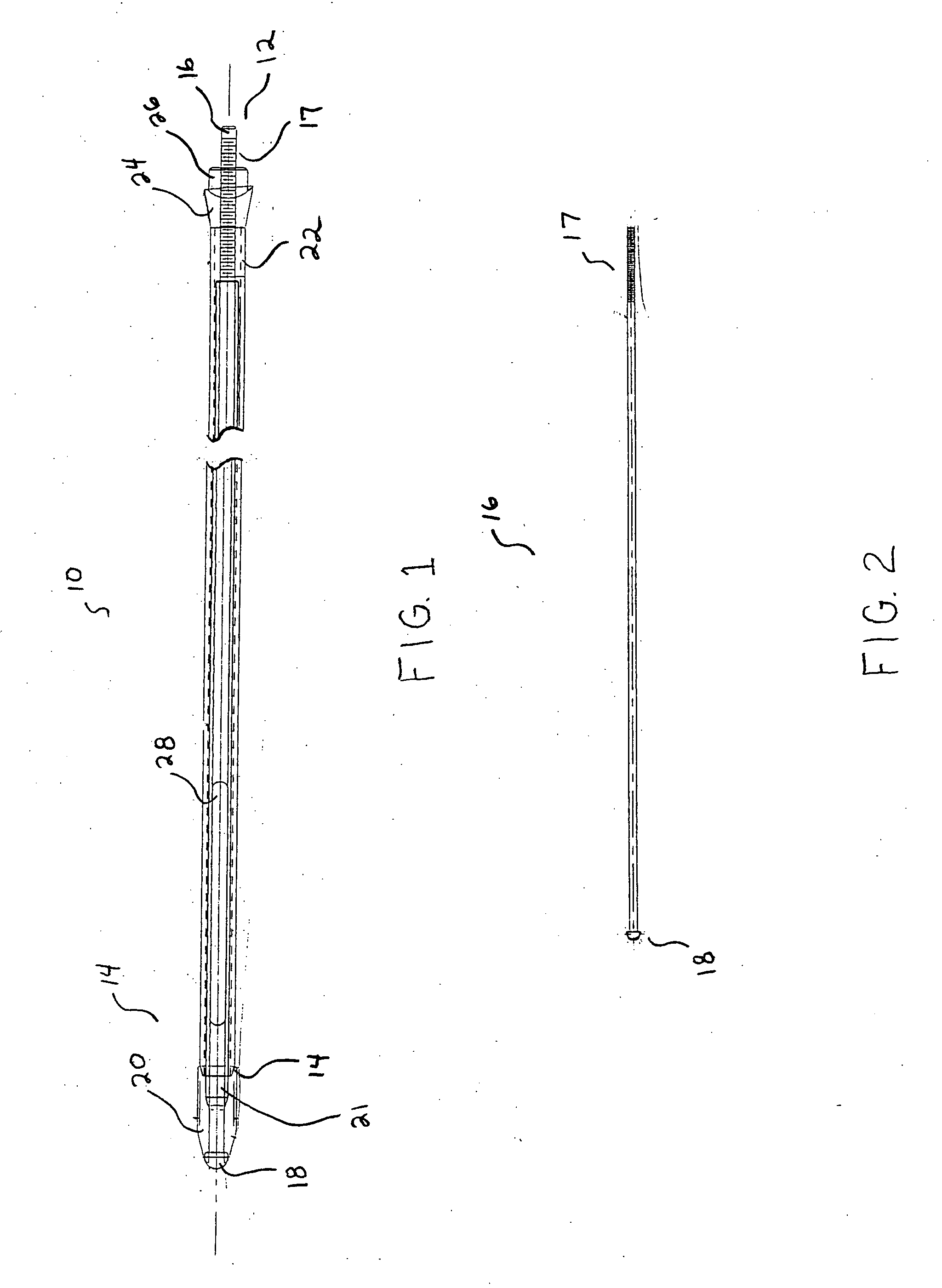Orthopedic intramedullary fixation system
- Summary
- Abstract
- Description
- Claims
- Application Information
AI Technical Summary
Benefits of technology
Problems solved by technology
Method used
Image
Examples
Embodiment Construction
[0045] In FIG. 1, the components of a long bone compression apparatus 10 having a proximal end 12 and a distal end 14 according to the an illustrative embodiment of the invention are shown assembled together in a cross sectional view. A guide wire 16 extends from the distal end 14 to the proximal end 12 of the compression apparatus and includes a threaded portion 17 on the proximal end of the guide wire 16 and a distal end stop 18 disposed on the distal end of the guide wire 16. A dilator 20 is disposed over the guide wire 16 adjacent to the distal end stop 18. As disclosed herein, the term ‘distal’ refers to the element or portion furthest from the threaded portion 17 of the guide wire 16 and the term ‘proximal’ refers to the element or portion closest to the threaded portion 17 of the guide wire 16.
[0046] In the embodiment shown in FIG. 1, an inner tube 21 is disposed over the guide wire 16 and an outer tube 22 is disposed over the inner tube 21. Both the inner tube 21 and outer ...
PUM
 Login to View More
Login to View More Abstract
Description
Claims
Application Information
 Login to View More
Login to View More - R&D
- Intellectual Property
- Life Sciences
- Materials
- Tech Scout
- Unparalleled Data Quality
- Higher Quality Content
- 60% Fewer Hallucinations
Browse by: Latest US Patents, China's latest patents, Technical Efficacy Thesaurus, Application Domain, Technology Topic, Popular Technical Reports.
© 2025 PatSnap. All rights reserved.Legal|Privacy policy|Modern Slavery Act Transparency Statement|Sitemap|About US| Contact US: help@patsnap.com



